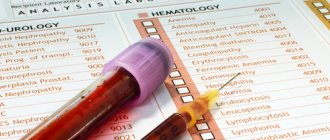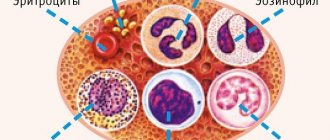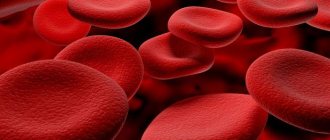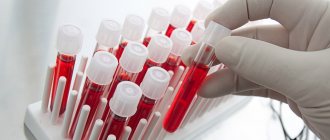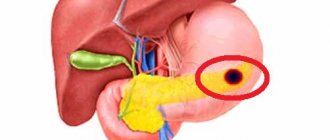Ekaterina Smolnikova
Practicing endocrinologist (10 years of experience). He has extensive experience working in private and public clinics in Russia.
Ask a Question
Last updated - January 23, 2020 at 5:40 pm
There are times in a person’s life when he has to undergo a medical examination, and as one of the qualitative studies, the doctor prescribes an RFMC analysis: what is it? Most people do not know what indicators it determines and why it is prescribed, but they want to study its features.
What is RFMC?
RFMC is not prescribed as a separate analysis. Fibrin-monomer complexes are determined during a hemostasiogram. They are assigned and taken into account in conjunction with other indicators:
- fibrinogen;
- INR;
- APTT;
- PTI;
- D-dimer;
- lupus anticoagulant, etc.
RFMK is normally present in the blood of every person. In clinical practice, the growth of the indicator is important. A decrease in RFMC is rare and is usually associated with irrational use of medications that affect hemostasis.
What is hemostasis?
Blood in the human body is like liquid tissue; one of its functions is the ability to coagulate, that is, it turns into dense clots and blood clots. This function in the blood is necessary for protection, so that in the event of wounds or cuts, all the blood does not leak out of the body.
The hemostasis system is responsible for the processes of coagulation and non-coagulation of blood plasma.
Composition of the main elements of hemostasis:
- The endothelium is a layer consisting of cells located inside the vessels. Damage to the endothelium most often occurs mechanically on the tissue. Cells that remain undamaged immediately produce the substance.
- Platelets - their role is that they have a gluing process and, collecting on the affected area, turn into a blood clot and prevent blood from leaking out of the human body. When the lesions are large and they fail, then the blood plasma begins a certain process.
- Plasma , which contains one and a half dozen enzymes. After their activation, a blood clot forms, which closes the affected area and the blood immediately stops.
Indications for examination during pregnancy
Regarding the hemostasiogram (and RFMC), experts did not come to a consensus. Some gynecologists say that a hemostasiogram is not a routine examination method. They warn that there is no point in prescribing screening for RFMC and other indicators of the blood coagulation system for all pregnant women. It is recommended to donate blood only if indicated:
- pregnancy planning against the background of risk factors for pathology of the hemostatic system: hereditary thrombophilias, previous spontaneous miscarriages, regressing pregnancy;
- threat of termination of a real pregnancy at any stage;
- placental insufficiency and disruption of uteroplacental blood flow;
- delayed fetal development;
- gestosis;
- multiple pregnancy;
- pregnancy after IVF;
- delayed fetal development;
- vaginal bleeding during pregnancy;
- phlebeurysm;
- heart defects;
- obesity;
- diabetes;
- smoking during pregnancy;
- autoimmune diseases;
- changes in the coagulogram indicating increased blood clotting.
Other gynecologists say that not all pathology occurs clearly, and it is often difficult to identify the problem in the early stages of its development. They suggest testing blood clotting in all pregnant women twice:
- in the first trimester or at the first visit to the doctor;
- after 30 weeks.
In the early stages, assessment of RFMC allows to identify serious hemostatic disorders leading to spontaneous miscarriage or regression of pregnancy. In the third trimester, the analysis makes it possible to detect other disorders associated with a natural decrease in blood during gestation. This approach allows you to detect hidden problems and prevent the development of complications before they manifest.
Since a unified approach has not yet been developed, many gynecologists adhere to the golden mean - they prescribe a blood test for RFMK in the presence of risk factors and abnormalities in a simple coagulogram.
D-dimer
D-dimer is a protein fragment that is formed as a result of the breakdown of a blood clot. When a vessel or tissue is damaged in the body, the process of blood clotting begins - the formation of blood clots, which contain a special protein fibrin. It “fastens” the components of the blood clot together and holds the blood clot where it formed.
Blood clots can occur not only at the site of tissue or vascular damage, but also inside vessels in the presence of predisposing factors: damage to the internal lining of blood vessels by various endogenous and exogenous substances and antibodies, disturbance of local hemodynamics - blood stagnation, the presence of turbulent flows.
Blood clots in blood vessels occur in a number of diseases: varicose veins of the lower extremities, atrial fibrillation, complicated course of infectious diseases, complications after surgical intervention.
Thus, the amount of D-dimers in the blood indicates the activity of thrombus destruction processes and indirectly allows us to assess the activity of thrombus formation. The amount of D-dimers can be increased during pregnancy, usually it gradually increases by the third trimester.
Until recently, high levels were considered a sign of a threat of thrombotic complications during pregnancy, but studies in recent years have shown that there is no clear connection between the level of D-dimer and the pathology of pregnancy.
What is analysis used for?
1. For the diagnosis of DIC syndrome.
2. For the diagnosis of deep vein thrombosis.
3. For additional assessment of the severity of thrombus formation and monitoring of ongoing anticoagulant therapy for pulmonary embolism and stroke.
When is the test scheduled?
For symptoms of deep vein thrombosis:
- severe pain in the legs (legs),
- severe swelling of the legs (legs),
- pale skin in the area of thrombosis.
If pulmonary embolism is suspected:
- sudden shortness of breath,
- difficulty breathing,
- cough,
- hemoptysis (blood in sputum),
- sharp pain in the chest,
- increased heart rate.
In DIC, when the following symptoms occur against the background of the underlying disease:
- dyspnea,
- bluishness of the skin,
- bleeding gums,
- nausea, vomiting,
- severe pain in muscles and abdomen,
- pain in the heart area,
- decreased urination.
When monitoring anticoagulant therapy.
Reference values: up to 0.78 mg/l
Important notes D-dimer concentrations may be elevated in older adults and in patients with high rheumatoid factor levels due to rheumatoid arthritis.
Preparing for the examination
RFMK is determined in the patient’s peripheral blood. Rules for taking the analysis:
- Blood is taken from a vein.
- It is recommended to take a hemostasiogram on an empty stomach in the morning after an 8-hour fast. You can drink water on the day of the examination.
- Two weeks before donating blood, you need to stop taking medications that affect the hemostasis system (in consultation with your doctor). If this is not possible, the woman should inform the nurse who takes the blood - she will note this information on the form. The interpretation of the results will be carried out taking into account the medications taken by the patient.
- The day before the examination, you should avoid physical and emotional stress.
- Two hours before donating blood, you should refrain from smoking.
- You cannot donate blood immediately after an ultrasound, x-ray, physical therapy or other medical procedures.
- The control study must be carried out in the same laboratory under the same conditions.
A blood test for RFMK is prescribed by a gynecologist or therapist. The doctor interprets the results taking into account the clinical picture of the disease and the woman’s complaints. No need to treat analysis! If the results obtained seem questionable and do not fit into the clinic, it is worth undergoing a re-examination.
What does RFMC analysis mean?
What is the blood test performed at RFMC? What norms for adults are considered to be positive indicators, and what indicates signs of an incipient disease? Many people know that they need to monitor their health, so they are interested in the sugar content in the blood system and such indicators as the presence of leukocytes, but there are tests that remain unknown to ordinary patients.
There are non-standard studies that are carried out for special indications. This is considered to be a blood test using the RFMC method. The basis of the study is donating blood from a vein.
Decoding the results and assessing the level of RFMK
The norm of RFMC outside pregnancy is up to 4 mg/100 ml. The lower limit of normal has not been established. A sharp decrease in fibrin-monomer complexes may indicate pathology, but the indicator must be assessed over time.
During pregnancy, the state of the hemostatic system changes, and the natural growth of RFMC occurs. This is due to several factors:
- the emergence of a new blood circulation (fetal cardiovascular system);
- increase in circulating blood volume;
- platelet levels increase slightly;
- the concentration of some blood clotting factors increases (VII, VIII, X);
- There is an increase in fibrinogen in the blood plasma.
All these factors affect the level of RFMC and lead to its slight increase during gestation. Physiological hypercoagulation develops - a condition in which the blood clots faster. This is necessary for normal implantation of the fertilized egg into the uterine wall and development of the placenta. Physiological hypercoagulation is also needed to stop bleeding during childbirth.
Blood counts change throughout pregnancy and return to normal only after childbirth. These changes are physiological - they are necessary for the normal development of the fetus. But if the level of RFMC changes significantly and exceeds the norm accepted for pregnancy, it is worth thinking about the development of complications. All those factors that lead to physiological hypercoagulation can cause thrombosis.
The norm of RFMC depends on the stage of pregnancy and is about 5 mg/100 ml. It is customary to focus on the following indicators:
- I trimester – up to 5 mg/100 ml;
- II trimester – up to 6 mg/100 ml;
- III trimester – up to 7 mg/100 ml.
When deciphering indicators, you need to take into account laboratory standards. The technique used to evaluate the material may vary, and this will affect the results of the examination.
Increased rate during pregnancy
After a woman has learned the news about pregnancy, the doctor will suggest that she take a test for RFMK. However, many expectant mothers ask the question: RFMK analysis, what is it? The fact is that it is important to monitor any increase in the RFMC indicator in the body of the expectant mother in order to prevent it in time in case of problems. Therefore, deviations, both upward and downward, are dangerous due to the following factors:
- if the blood begins to clot poorly, then complications during childbirth, as well as during pregnancy, are possible;
- with active blood clotting, there is a possible risk of thrombosis, as well as blockage of blood vessels in the future.
During pregnancy, a woman undergoes a new circulatory process that supplies nutrition to both the fetus and the placenta.
The hemocoagulation system actively adapts to new conditions, and it prepares for the process of gestation and childbirth. Since during this period the blood changes its viscosity and internal components, the coagulogram parameters may change. The results obtained will depend on the normal indicators established by the laboratory that will conduct the relevant study. Therefore, you need to take this fact into account before submitting the analysis. If, for example, the norm for this laboratory is 5.0/100 milligrams, then the values will be as follows: Article on the topic:
How to independently apply for a sanatorium-resort card at a clinic under a compulsory medical insurance policy?
- the system aimed at hemostasis has not yet had time to accept a new state in the first trimester, so the norm will remain at around 5.5/100 milliliters;
- when the placenta forms in the second trimester, from about 16 weeks there will be an increase in indicators from 6.5/100 milligrams;
- with an aging placenta, by the end of the third trimester, the body is preparing for its removal, so the indicator system increases to 7.5/100 milligrams, which is considered to be normal values of the fibrin-monomer complex.
What threatens deviations from the norm in women is that they are dangerous not only for her, but also for the fetus, since the risk of miscarriage, fading pregnancy and pathological conditions in the child increases.
To detect abnormalities in a timely manner, you should be tested for the quality of blood clotting 3 times.
At the very beginning of pregnancy, a woman undergoes a test when registering for standard registration at a local consultation. Next, the doctor suggests taking the test a second time in the middle of the pregnancy process. At the end of gestation, at approximately 36 weeks, the analysis is repeated.
If the level of RFMC is elevated, then the woman will be asked to take additional tests and undergo a series of studies to fully clarify the situation.
If there are obvious deviations from the norm, the medical specialist suggests retaking the test again in order to identify violations and prescribe therapeutic measures. The doctor prescribes treatment depending on the patient’s weight and stage of pregnancy. One thing is obvious: only proven drugs are chosen for expectant mothers, for example, Heparin.
If you strictly follow the schedule of scheduled examinations and take the necessary tests, then problems with deviations from the norm should not arise, unless, of course, pathological changes occur in the body.
Problems are usually observed in those who deliberately do not show up for research and do not want to follow the advice prescribed by their doctor.
Raising RFMK
The growth of RFMK above the norm established for a certain period of pregnancy indicates a strengthening of the coagulation system. Blood clots faster, and blood clots can form on the walls of blood vessels. This condition may be due to various reasons:
- Hereditary pathology of the hemostatic system. To confirm the diagnosis, you need to undergo an additional examination - donate blood for D-dimer and other markers of genetic abnormalities. Hereditary thrombophilias may not manifest themselves in any way before pregnancy or may make themselves felt by individual symptoms (frequent nasal and uterine bleeding, rapidly forming hematomas, etc.). Often, changes in the blood coagulation system are detected only during pregnancy or in preparation for conceiving a child. They cause infertility, lead to spontaneous miscarriage in the first and second trimesters, and premature birth after 22 weeks. Hereditary anomalies of the hemostatic system are considered one of the causes of regressive pregnancy, disruption of uteroplacental blood flow, and delayed fetal development.
- Conditions associated with a high risk of thrombosis: varicose veins, coronary heart disease, heart defects, autoimmune diseases, diabetes mellitus, purulent inflammation of various locations. These processes often occur even before the child is conceived. During pregnancy, the risk of exacerbation of pathology and the development of thromboembolic complications increases. An increase in RFMK indicates that the process has started, and there is a high probability of blood clots forming in the vessels against the background of the underlying disease.
- Conditions associated with disseminated blood coagulation. During pregnancy, the growth of RFMK is a marker of gestosis. With this pathology, the risk of thrombosis, bleeding, and death of the woman and fetus as a result of vascular disorders increases.
- Consequences of previous injuries and operations. After damage to the skin, the blood coagulation system is activated, and RFMK grows. A significant increase in the indicator indicates a high risk of thrombosis.
- Malignant tumors. An increase in RFMK may be associated with the growth or disintegration of neoplasms of any location.
Why does the RFMK level change?
If the result of the analysis for RFMC showed a deviation from the norm, then this fact means that changes have occurred in the body. Most often these include:
Article on the topic:
What is somatotropic hormone (growth hormone)?
- Increased cholesterol levels. As cholesterol levels rise, vasoconstriction occurs, which gradually leads to thrombosis or blockage of blood vessels. The reason is due to the fact that fat accumulated in the body is deposited on the walls of blood vessels.
- Manifestation of hemorrhagic vosculitis. This disease is accompanied by high bleeding due to the inflammatory process in the blood vessels.
- ICE. This syndrome manifests itself in the appearance of small blood clots in the area of vessels, which often block blood flow. After this, the process of thrombosis begins in the body.
- Injuries in the body. After an injury or other damage to internal organs occurs, the level of platelets and monomers in the human body increases.
Sometimes the level of increase in RFMC does not mean that pathological causes have appeared in the body, but is associated with the physical condition of the person. This occurs as a consequence of excessive loads and prolonged stressful situations, leading to an increase in the indicator. After the body returns to a positive psychological state and moderate physical activity, the level of RFMC is restored.
Decrease in RFMK
A fall in RFMC is rare and is usually associated with irrational medication use. Exceeding the dosage of drugs that affect the blood coagulation system can lead to changes in indicators. RFMC should decrease while taking medications, but remain within normal limits (about 5 mg/100 ml). A fall in RFMC below the level characteristic of pregnancy (less than 4 mg/100 ml) can lead to the development of complications:
- premature placental abruption and the development of bleeding during pregnancy;
- excessive blood loss during childbirth and the postpartum period.
Bleeding is dangerous to a woman’s life and can lead to fetal death during pregnancy or childbirth.
APTT
APTT - Activated partial thromboplastin time - an indicator reflecting the internal pathway of blood coagulation. In clinical practice, the determination of this indicator is most often used to monitor the state of the blood coagulation system in patients receiving antithrombotic drugs (for example, heparin).
In addition, it is recommended to conduct an APTT study before any planned surgery in order to promptly identify possible abnormalities in blood coagulation processes and avoid complications. APTT is an important test for diagnosing certain blood diseases (hemophilia, von Willebrand disease, etc.).
Reference values: 25 - 35 seconds
Prolongation of APTT above normal values indicates hypocoagulation (tendency to bleeding) and can be caused by:
- administration of heparin,
- severe liver diseases, in which the synthesis of proteins involved in blood clotting is disrupted,
- vitamin K deficiency (many blood clotting factors are vitamin K dependent),
- congenital deficiency of certain blood clotting factors,
- antiphospholipid syndrome (a disease in which a large number of antibodies to components of cell membranes are detected in the blood),
- presence of hemophilia,
- the second stage of DIC syndrome (a sharp disruption of all blood coagulation processes, observed in many critical conditions: shocks, severe injuries, burns, massive thrombosis, etc.).
Women are not recommended to take this test during menstruation.
A shortened APTT indicates a tendency to thrombus formation and can be associated with thrombosis of any location, as well as with some hereditary diseases characterized by an increased risk of thrombus formation. The reason for the shortening of APTT may be the first stage of DIC syndrome. To exclude deep vein thrombosis and pulmonary embolism, only D-dimer is a reliable diagnostic criterion.
Tactics when changing the RFMK
When RFMK increases, drugs that affect the blood coagulation system are prescribed:
- Anticoagulants (low molecular weight heparins): Fraxiparine, Fragmin, Clexane. They affect the activity of blood clotting factors, reduce its viscosity, and prevent the formation of blood clots. They are prescribed subcutaneously once a day for a course of 10-20 days.
- Antiplatelet agents: Curantil, Pentoxifylline, etc. Reduce platelet aggregation and inhibit blood clotting. They improve blood supply to tissues, normalize the outflow of venous blood, stimulate the formation of collateral vessels, eliminate tissue hypoxia and increase its oxygen supply. Prescribed in tablets for a course of 3 weeks.
- Antihypoxants: Actovegin, Riboxin. They improve blood flow in tissues (including the placenta), activate the supply of oxygen, and protect against the effects of aggressive free radicals. They are prescribed intravenously and in tablets for a course of 5-10 days.
- Vitamins. It is recommended to take folic acid from early pregnancy. From the second trimester, multivitamin complexes are prescribed, designed to meet the needs of a changing body. Vitamins by themselves will not eliminate the threat of blood clots, but they enhance the effect of medications and accelerate the normalization of the hemostatic system.
The effectiveness of treatment is monitored 2 weeks after discontinuation of the drug. A hemostasiogram is prescribed with an assessment of RFMC and other factors. Based on the results of the blood test, further tactics for managing the patient are determined:
- prolongation of pregnancy to 37 weeks or more without additional medications:
- prolongation of pregnancy and change in treatment regimen (drug replacement, prescription of new medications);
- urgent delivery (natural birth or caesarean section).
If there is a sharp decrease in RFMC, you need to change the dosage of the drug or stop using it. Correction of the treatment regimen is carried out by the doctor, taking into account the detected abnormalities in the hemostasiogram and the duration of pregnancy.
RFMK is an important indicator of the blood coagulation system. If abnormalities are detected in the hemostasiogram, do not delay a visit to the doctor. The sooner the problem is identified and treatment is started, the easier it is to avoid the development of complications.
What is a coagulogram?
A coagulological study is the study of the properties of blood for its coagulability and other pathologies. This analysis, as a rule, is included in the list of mandatory ones for patients preparing for surgery and having blood diseases, for pregnant women.
Coagulation studies can be prescribed to people with suspected increased blood viscosity and to patients who are forced to take the same pharmacological drug for a fairly long period of time.
After assessing the patient’s clinical condition and at the slightest suspicion of thrombohemorrhagic diseases, laboratory diagnostics of the hemostasis system is carried out, which includes two successive stages: screening and clarifying.
A screening coagulogram should include the following set of tests: platelet count, prothrombin time, prothrombin index, APTT, thrombin time, fibrinogen. In certain cases, it is recommended to add D-dimer and RFMK.
The clarifying examination includes diagnostic tests such as platelet aggregation, the activity of various coagulation factors, antithrombin III, determination of lupus anticoagulant and other specific tests. The choice of conducting certain clarifying tests depends on the clinical situation and the results of screening tests.
Cardiovascular diseases are the leading cause of death among the population. Every year in Russia more than 1.5 thousand people per hundred thousand of the population die from strokes, heart attacks, venous thromboembolism and other cardiovascular diseases. The key cause of these diseases is thrombosis.
How to take the RFMC blood test
In medical practice, this test is considered an additional laboratory test and is prescribed for those who suspect problems with blood clotting or a predisposition to thrombophilia. However, the approach for expectant mothers is different; For careful monitoring of the blood condition, on which normal pregnancy depends, a competent gynecologist will refer the pregnant woman to RFMC without fail.
In the early stages, determining the RFMC indicator, with rare exceptions, does not make sense - the conditions for changes in blood composition have not yet arisen. As a rule, the analysis is prescribed at 28–34 weeks.
If the level of fibrin particles in the blood is slightly elevated, repeat testing is not required. It’s a different matter when the RFMK jumps to dangerous values - then the woman will have to be tested more than once so that the doctor can monitor the dynamics of changes as a result of the therapy. Two-week treatment did not reduce the level of microthrombi, which means that the gynecologist sends the expectant mother to a hematologist and geneticist so that they can adjust the therapy.
The main danger lies in the rapid and multiple growth of RFMK - then there is a threat to life and the woman requires emergency care in a hospital.
Preparing for analysis
Blood for testing is taken from the patient’s ulnar vein. To avoid having to go through this unpleasant procedure twice, follow the rules:
- Do not have breakfast or drink in the morning - blood is donated on an empty stomach; To avoid hunger, it is recommended to eat heavily at dinner the day before;
- do not dull the feeling of hunger by smoking - the test results may be distorted (and in general, cigarettes and pregnancy are incompatible things);
- if you are taking blood thinning medications, stop taking them a day before going to the clinic - otherwise there will be an error in the research; taking folk remedies is also unacceptable;
- 2-3 days before the procedure, eliminate physical activity, persuade yourself not to be nervous, not to react too emotionally to words or events.
To study RFMK, blood is taken from a vein from the patient;
The test is taken on an empty stomach. Sometimes a pregnant woman learns the results on the same day, but more often, due to the workload of the laboratory, she has to wait 2-3 days.
It happens that fibrin particles are not found in the patient’s blood at all - this is an ideal indicator that is extremely rare.
Study details
Venous blood taken from the patient is placed in a test tube and taken to the laboratory. There, the tube is placed in a centrifuge to separate the plasma and blood cells. Then the laboratory assistant works only with plasma.
In a centrifuge, under the influence of centrifugal force, the blood is divided into plasma, a layer of leukocytes and a layer of red cells; microthrombi are looked for in plasma
A special reagent is added to the plasma and waited for two minutes. At first, the concentration of fibrin grains is high, but decreases every second. To help doctors, a table of approximate values has been compiled to guide them during the study. After two minutes, the final level is obtained; the figure is entered in the conclusion.
It is curious that different laboratories set their own RFMC standards, depending on the reagent that was added to the plasma. In any case, only doctors can decipher the results.
RFMK norms
Often patients who have received a referral for RFMC wonder what kind of analysis this is and what is the interpretation of the results obtained. In medical practice, there are universal standards that allow assessing blood clotting in patients.
According to experts, a negative result is the ideal value for an adult. Thus, with an ideal diagnostic result, fibrin should not be present in the blood.
The result is considered positive when fibrin appears in the patient’s plasma within 2.5 minutes. Using a specialized formula, doctors convert the specified time into a numerical analysis value.
The normal level of RFMC varies between 3.38 +0.02 mg per 100 ml. The limit value is 4 mg. Note. When conducting a study, you need to take into account the reference indicators of a specific laboratory. Often the norm in individual medical institutions varies within the range of up to 5.0 mg/100 ml, causing unnecessary concern in the patient.
Violation of the norm during diagnosis indicates a violation of the hemostatic system, which is a clear sign of a blood clotting disorder. A patient with this result runs the risk of serious illness.
RFMK concentration
Since there is a direct relationship between RFMK and the time of fibrin formation, after adding the reagent to the test plasma, there is a table of this relationship. It is a translation of time indicators from seconds into digital values of RFMK concentration. The results are shown in the table below.
Fibrin formation time, seconds Quantitative concentration of RFMC, mg/100 ml
| 5-6 | 28 |
| 7 | 26 |
| 8 | 24 |
| 9 | 22 |
| 10 | 21 |
| 11 | 19 |
| 12 | 17 |
| 13 | 16 |
| 14 | 15 |
| 15 | 14 |
| 16 | 13 |
| 17 — 18 | 12 |
| 19 — 20 | 11 |
| 21 — 23 | 10 |
| 24 — 25 | 9 |
| 26 | 8.5 |
| 27 — 28 | 8 |
| 29 — 31 | 7.5 |
| 32 — 33 | 7 |
| 34 — 36 | 6.5 |
| 37 — 40 | 6 |
| 41 — 45 | 5.5 |
| 46 — 54 | 5 |
| 55 — 69 | 4.5 |
| 70 — 87 | 4 |
| 88 — 120 | 3.5 |
| More than 120 | 3 |
Why is the study prescribed?
The work of the body is a special system in which everything is interconnected. The normal functioning of internal organs and systems is possible only if each component works correctly, that is, each organ is healthy. If a malfunction occurs (infection, inflammation, etc.), this affects the functioning of all systems. The circulatory system reflects any changes and course of diseases in the body. This is why clinical and biochemical blood tests are so important for diagnosis.
Analysis of the RFMK allows you to determine whether there are deviations in the process of hemostasis. What are fibrin-monomer complexes? These are the smallest particles of blood clots, red blood cells, which are responsible for blood clotting in humans. An increase in the number of these particles in a patient's blood sample indicates a possible risk of developing thrombosis, or "thickening" of the blood. At the same time, general blood circulation worsens. Also, cells may not receive enough oxygen and beneficial enzymes, which are carried throughout the body with blood cells.
Physiological abnormalities
In addition to hereditary or congenital factors leading to exceeding the RFMC values, there is one very important condition of the female body - the period of bearing a child. In the second half of pregnancy, especially closer to childbirth, more fibrin begins to form in the body to prepare for the upcoming process and minimize the risk of bleeding. This increases the concentration of RFMC in the blood, increasing its coagulation ability.
During pregnancy, among numerous examinations, this test must be prescribed at least twice in the middle of the term and closer to childbirth - at 33-38 weeks, in order to prepare in advance for possible complications. In some cases, if pathological marks for a given period are identified, the necessary therapy may be prescribed, taking place under regular monitoring of blood counts. During pregnancy, RFMC increases gradually and has a certain range of values that is considered normal.
These include the following:
- First trimester. At this time, global changes in preparation for childbirth do not occur in the woman’s body and the formation of the placenta is just beginning. Therefore, normal values are 5–5.5 mg/10 ml.
- Second trimester. Restructuring in the female body is taking place in an accelerated manner, creating optimal conditions for the development of the fetus. The indicators increase to 5.5–6.5 mg/100ml.
- Third trimester. Preparations begin for delivery and possible bleeding. The body mobilizes all its resources and the level of fibrin-monomer complexes can reach 7.5 mg/100 ml.
Attention! If a pregnant woman’s permissible RFMC levels are elevated, this can threaten the development of serious and life-threatening pathologies for the mother and fetus, such as thrombosis, thrombophilia, and dysfunction of the placenta.
In most cases, this deviation is of a hereditary nature. At the same time, a woman’s emotional state may change in this position – often there is irritation and aggression. Against this background, even spontaneous termination of pregnancy - miscarriage - is possible, so appropriate therapy is used to reduce such symptoms.
